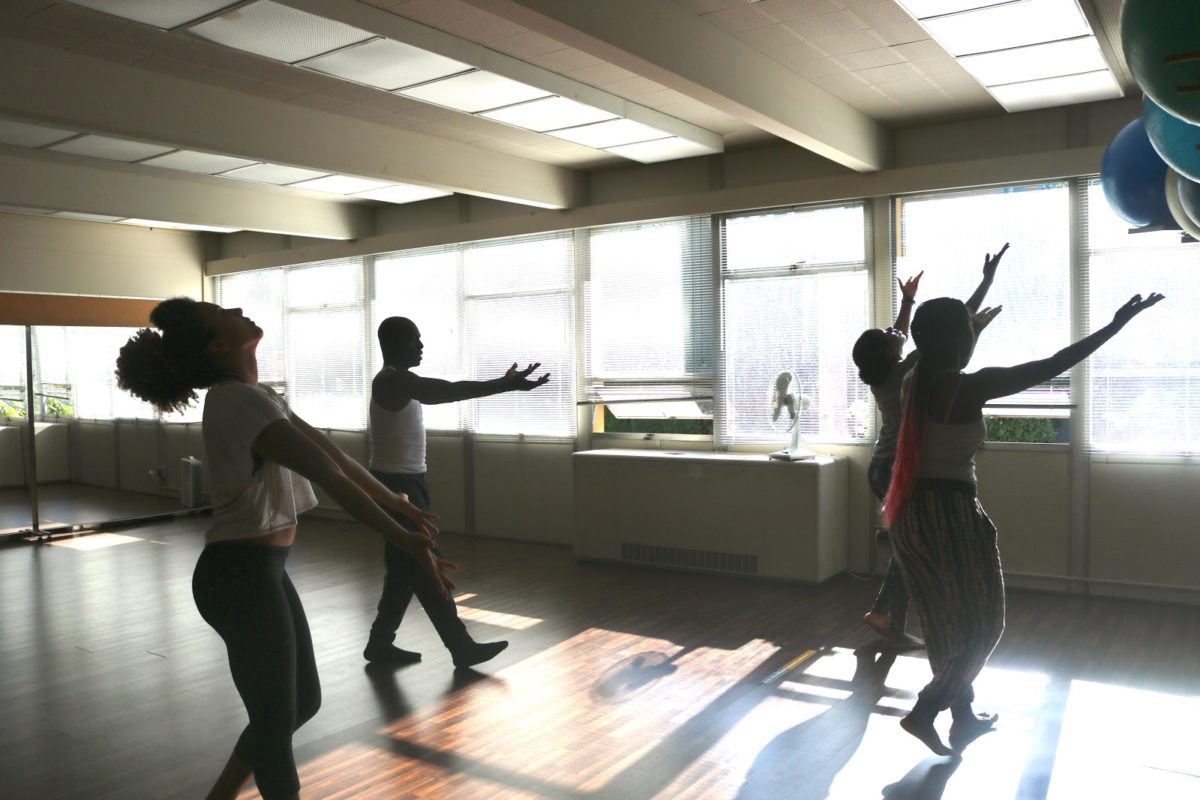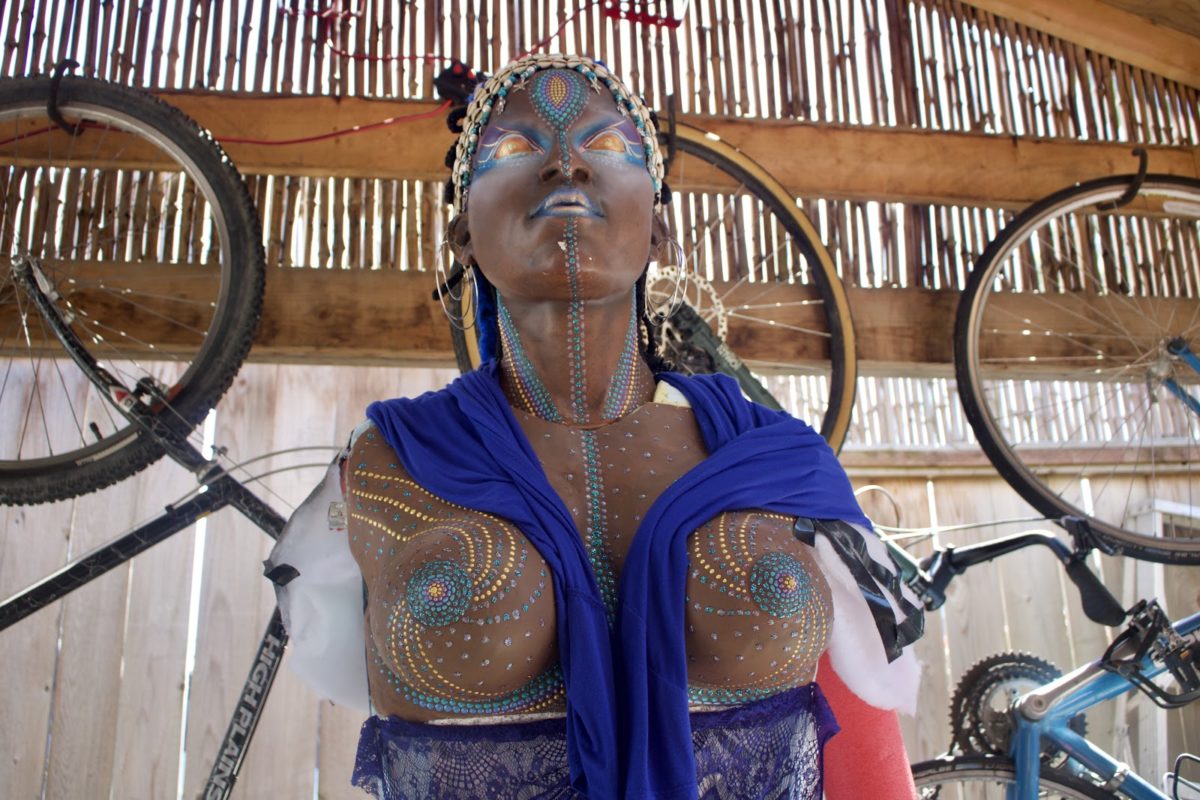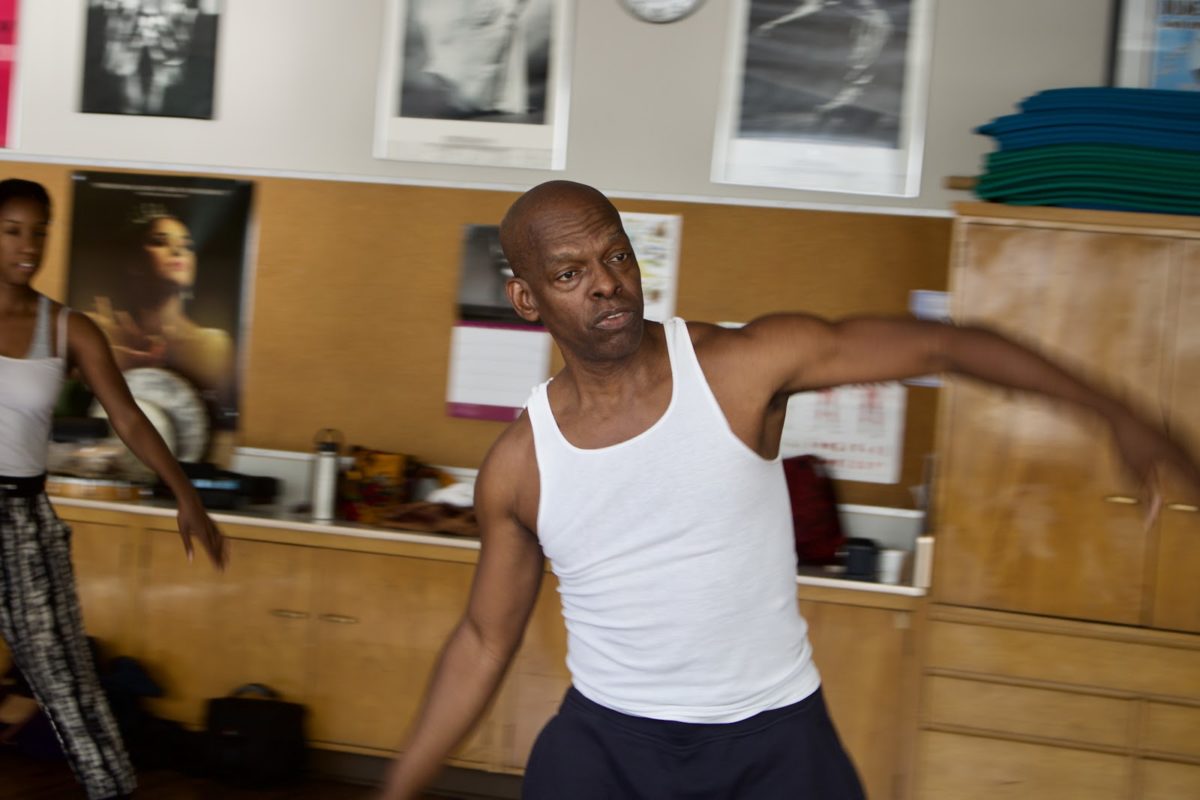
Choreographer Elisio Pitta’s introduction to dance was spiritual.
“My mother was a priestess of the Candomble religion, an Afro-Brazilian religion, which is mostly based on music and dance. The rituals are danced, and have music, drumming, and singing,” said Pitta, originally from Bahia, Brazil. “And that was, what I would say, my first exposure to dance.”
Pitta is the choreographer of the Seattle Women’s Steel Pan Project’s performance called “Tides of Change,” which will be part of the Fremont Solstice Parade this weekend. The Seattle Women’s Steel Pan Project is an all-female musical group that specializes in music from Brazil and the Caribbean.
“Tides of Change” will involve at least 100 performers, including musicians, dancers, puppets, stilt-walkers, props and a giant hand-pulled float to carry it all.
At the center will be the image of Yemonja, the goddess of the Earth’s oceans and seas from Ifa, a Latin American cosmology tied to the Yoruba traditions of Nigeria. She is revered in the Candomble religion and other traditions connected to the African diaspora.
Yemonja will be represented by an 8-foot-tall puppet made of agua resin over sculpted clay carried in the procession by a puppeteer hidden in her dress. The figure will follow the show’s main act, the steel pan players of the Seattle Women’s Steel Pan Project.
About 15 women will play steel pans on the float, a wheeled 38-foot-long structure, decorated with waves and sea turtles. Further along in the procession will be an “evil king” figure represented by a stilt-walker wearing a costume made of plastic trash.
“Tides of Change” also is meant to draw attention to the issue of plastic pollution, said Michael Shantz, artistic director of the Seattle Women’s Steel Pan Project.
The image of Yemonja represents the health of the oceans today, he said.
“[Yemonja] is the mother of all life, and she’s one of the most important of all [Ifa saints],” Shantz said. “She’s emblematic of a life force that cannot be denied… she’s basically the personification of the ocean itself.”

The musicians will alternate between two short songs — “Tides” and “Fire” — in the style of Soul of Calypso (a.k.a Soca) music, said Oriana Estrada, co-founder and director of the Seattle Women’s Steel Pan Project.
“[‘Fire’] is a very upbeat celebratory tune, and it’s meant to offer a juxtaposition for ‘Tides,’ which is more emotional and melancholy,” Estrada said. “Then it flips over to ‘Fire,’ which is more of the tradition of Trinidad and Tobago, where this music is from. It gives people an opportunity to dance, celebrate, and engage with the music.”
The steel pan players will be accompanied by other musicians, including brass players from Seattle JazzED, and a percussion section, known as the “engine room” in steel pan bands.
“It is always an essential component of steel pan music,” Estrada said. “It is what drives and holds the rhythm for everyone.”
This year’s dance borrows elements from a piece Pitta choreographed for the Yemonja Arts Festival, which took place in California’s Bay Area in February.
Since both shows symbolize and pay respects to Yemonja, the movements in this dance retain a similar meaning, though they have been re-worked for a parade format.
“Everything has to change according to the fact that you are passing people by, and they only witness your artistic expression for a maximum of two minutes,” Estrada said.

Pitta specializes in the style of Afro-Brazilian contemporary dance. He describes it as a form of traditional dance from which he draws inspiration for his choreography; by understanding the symbolism behind the movements and transforming them for today. Pitta also performs Capoeira – a dance-based Brazilian martial art – which he learned from from his father.
He also has first-hand experience with the carnivals in Brazil.
“The people are mixed within the performance… It’s a big show,” he said. “It’s the people, right there in the middle of everything happening.”
Artist Tenold Sundberg, a long-time family friend of Shantz, created the initial concept sketches for all of the costumes and puppets in the procession. He initially learned the value of grandiose presentational styles when he visited Brazil.
“I realized that this is theater – you have to be big and bold,” he said. “When you’re moving through a crowd, it’s really interesting to consider what they may see. So it becomes this very special art form that’s unlike anything that really happens in Seattle.”
Sundberg noticed the value of community-oriented art creation and collaboration in Brazil, and said that was a notable difference from art culture in the United States.

“In the United States we think of the lone artist. Our education is bombarded by the solo male white guy who’s just this great genius,” Sundberg said. “But [when] you think about the artistic value of carnival culture, you realize that it’s not just a single person who can actually make this happen, it’s the community.”
As a part of the carnival arts movement, the show tries to bring these values of community already so present in Brazilian carnivals to an American audience. The performers and collaborators hope that “Tides of Change” will turn Seattle – at least for a moment – into a carnival culture.
The Fremont Solstice Parade will take place on Saturday, June 16, starting at 1 p.m. at Northwest 39th Street and Leary Way Northwest, and ending at Gasworks Park. For more information about the “Tides of Change,” visit the Seattle Women’s Steel Pan Project website.
WATCH: Tides of Change: The new Fremont Solstice Parade production brought to you by Seattle’s female steel pan players.


Can’t wait for the parade. This looks awesome!
Great story!